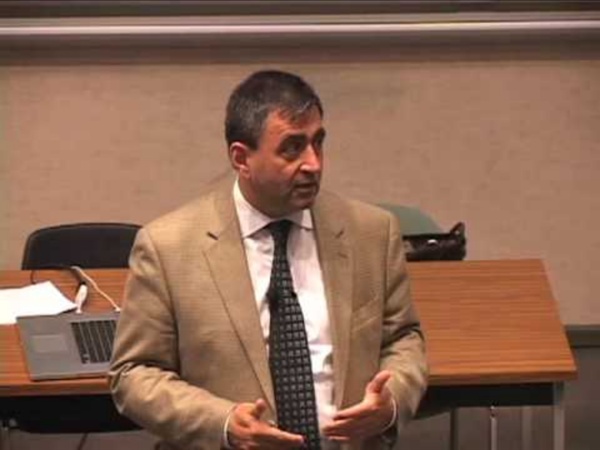



MathsLemoine Gapminder: Unveiling the beauty of statistics for a fact based world view. Shaping Curricular Identity resources La classe inversée Introduction La classe inversée, ici mise en place, repose sur la mise à disposition la veille du cours d’une capsule. Cette capsule vidéo courte n’est pas un résumé mais se présente plus comme une “mise en bouche” de la notion. Que met-on dans la capsule ? Avec l’iPad, on a des applications qui permettent de réaliser des capsules facilement. J’utilise Adobe Voice qui est gratuite. Visionnage la veille de la capsule L’élève visionne une capsule de deux minutes servant de point d’accroche à la notion abordée. Je joins à la capsule un formulaire Google pour vérifier qu’il n’y a pas eu de problème de connexion. Dans le formulaire, il y a 3 questions : “Quel est le nom de l’élève ?”
The best stats you've ever seen - Hans Rosling Rosling is a passionate advocate for “liberating” publicly-funded data on the Internet. Select one topic area for which country-specific data might be compared (e.g., education, health, food production, the environment, etc.), and identify what you think are the best sources of data in this area on the Internet. Create a guide that lists these sources, and provides a brief review of each. If the administrators of these data repositories are thinking about how users might engage with the data via mobile devices or social media, note this in the review. If the administrators currently aren’t doing anything in these areas, how could mobile devices and social media enhance the user’s experience? Here are a few resources to make learning statistics an interesting experience.
Resources related to effective teaching Ardoises numériques, ENT et classe inversée : un cocktail réussi pour de nouvelles compétences Dans la classe de Patrick Vanhoutte, les ardoises numériques font partie du paysage ; aujourd’hui, avec la connexion à l’ENT disponible sur les ardoises, l’enseignant optimise les usages de ces deux outils. En amont, il prépare ses séances, personnalisées pour chaque élève et leur poste le contenu sur leur espace ENT ; chaque élève peut ainsi découvrir le travail à faire avant d’entrer en classe. Après chaque cours, l’enseignant récupère également le travail réalisé sur les ardoises numériques ; il peut annoter ou mettre des commentaires sur les productions puis renvoyer la correction à l’élève sur son espace ENT. Avec l’ENT et le travail sur support numérique, les échanges entre élèves et enseignants sont facilités. Pour ce public à la scolarité particulièrement délicate, ce travail est doublement intéressant : il les oblige à lire les messages envoyés par l’enseignant (et donc effectuer un travail de lecture) mais également à acquérir une certaine autonomie.
Data Demystified – Equipping you with the information you need to thrive in our data rich world. Curricular Identity L’apprentissage actif expliquerait les effets positifs de la classe inversée Pour plusieurs intervenants du milieu de l’éducation, la classe inversée est un modèle qui aurait des impacts positifs sur la réussite et la motivation des élèves. Mais le succès de la classe inversée relève-t-il du modèle lui-même ou des implications qu’il sous-tend? Une étude s’est penchée sur la question. La classe inversée, modèle pédagogique qui vise à ce que les élèves réalisent les activités pratiques en classe et assimilent la portion théorique en dehors des heures de cours, jouit d’une certaine popularité actuellement. Pour plusieurs intervenants du milieu de l’éducation, au primaire comme au secondaire, ce modèle aurait des impacts positifs sur la réussite et la motivation des élèves. Une étude publiée dans le dernier numéro de la revue Life Sciences Education s’est intéressée à cette question. Les chercheurs ont par la suite analysé différentes données, dont les notes des étudiants et les taux de réussite, et ont mesuré des attitudes.
Successful Teaching Les 10 innovations pédagogiques qui feront (peut-être) 2015 (crédits AFP) L’université britannique online The Open University a publié il y a quelques semaines son rapport annuel sur les pédagogies innovantes. En recoupant les pratiques, les technologies, les recherches les plus en pointe dans le milieu de l’éducation, les auteurs du rapport proposent une liste de 10 innovations pédagogiques appelées à se développer à court ou moyen terme. Certaines de ces innovations sont très théoriques, issues de la recherche, d’autres sont encore confidentielles en France, la plupart concernent l’université ou le secondaire mais pourraient bien un jour irriguer la pratique de tous les enseignants... Les MOOCs, les cours massifs en ligne donné par la plupart des universités (certains sont suivis par plusieurs dizaines de milliers de personnes) vont voir leur versant social et coopératif se développer largement. Cette innovation est déjà bien installée, notamment en France, dans le supérieur et dans le secondaire.
Watch the Thai Commercial That Has Half the World Sobbing Uncontrollably Looking for a tear-jerker today? Thai mobile company TrueMove has got you covered with this story of a noodle seller whose generous act toward a young boy with a sick mother brings unexpected rewards 30 years later. With almost 6 million hits in just a few days, the ad is getting lots of press. Oddly, instead of focusing on the story, a bunch of bloggers have latched onto the ad and are using it to start a flame war with American advertisers about why we can't come up with ads this moving and cinematic. I guess that was a different kind of crying game.